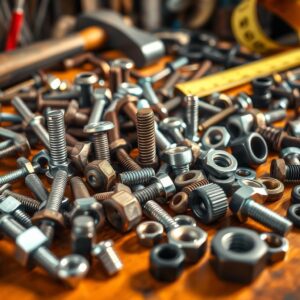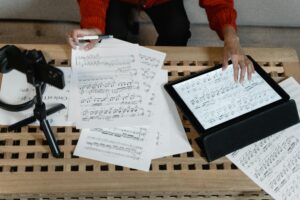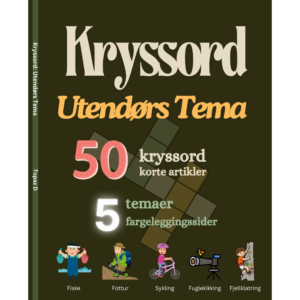
Explore & Play
Discover interesting topics and solve the accompanying crossword puzzle.
Boat Crossword | Nautical Terms and Equipment
Table of Contents
Welcome to our blog post! To get the most out of your experience, we recommend starting with our Boat Crossword puzzle. It’s a fun way to test your knowledge of nautical terms and equipment. After you’ve tackled the crossword, dive into the article below for a deeper understanding of the essential boat components and terminology. If you’re new to this topic, feel free to read the article first to familiarize yourself, and then return to the crossword for a hands-on challenge. Enjoy exploring both the puzzle and the insights we have to offer!
Boat Crossword
You can either fill in the crossword puzzle directly on this page or click the button in the bottom right corner to print it for free.

Navigating the Seas: Essential Equipment and Terminology
Navigating the open seas requires a deep understanding of essential equipment and terminology that ensures a smooth and safe journey. In this article, we’ll explore the vital components of a boat, the necessary navigational equipment, key sailing components, maintenance and safety practices, and essential nautical terms. To enhance your learning experience, we’ve included a crossword puzzle featuring the terms discussed.
1. The Anatomy of a Boat
To navigate effectively, it’s crucial to understand the basic structure of a boat and its various components. Each part of a boat plays a specific role in its functionality and performance.
Hull
The hull is the main body of the boat, responsible for providing buoyancy and stability. It’s designed to displace water and keep the boat afloat. The shape and material of the hull can significantly affect the boat’s handling and speed. For example, a deep V-hull design improves stability and performance in rough waters, while a flat-bottomed hull is better suited for calm, shallow waters.
Deck
The deck is the flat surface on top of the boat where crew members walk and where various equipment is mounted. It’s essential for movement and storage, providing space for activities and gear. A well-designed deck can enhance safety and functionality, incorporating features such as non-slip surfaces and strategically placed cleats for securing lines.
Mast and Rigging
The mast is a tall pole that supports the sails, while the rigging includes the system of ropes and chains that maintain the mast’s position and control the sails. Proper rigging is crucial for sail support and maneuverability. It allows the sails to catch the wind effectively, propelling the boat forward and aiding in navigation.
Keel
The keel is an underwater central support that provides stability and prevents the boat from drifting sideways. It’s a critical component for maintaining balance and improving performance. A well-designed keel helps in reducing drag and increasing the boat’s overall efficiency, especially when sailing against the wind.
Transom
The transom is the flat part of the stern above the waterline. It supports the outboard motor and provides structural support to the rear of the boat. This component plays a crucial role in the boat’s overall stability and performance, especially during high-speed maneuvers.
2. Essential Navigational Equipment
Navigational equipment is vital for charting a course and ensuring safe travel across the waters. Understanding and utilizing these tools can make a significant difference in your boating experience.
Charts
Charts are maps used for navigation, helping boaters plot their routes and avoid hazards. They provide detailed information about water depths, underwater obstacles, and navigational aids. By studying charts, sailors can plan their journeys with greater accuracy, ensuring a safer passage.
Compass and GPS
A compass and GPS are fundamental tools for determining direction and location. The compass helps identify cardinal directions, while GPS provides precise location information using satellites. Together, these tools offer a comprehensive navigation solution, allowing boaters to stay on course and reach their destinations efficiently.
Buoys and Markers
Buoys and markers are floating devices used for navigation or safety. They indicate safe water paths, hazardous areas, and mooring locations. Understanding their meanings and positions is essential for safe and effective navigation, helping to prevent accidents and ensure a smooth journey.
Windlass
The windlass is a mechanical device used to lift the anchor. It simplifies the process of anchoring and retrieving the anchor, making it easier to secure the boat in place. A well-maintained windlass can enhance the efficiency and safety of anchoring operations.
Portholes and Deckhouse
Portholes are small windows on a boat that provide light and ventilation, while the deckhouse is a structure on the deck that offers shelter and additional space. These features contribute to the overall comfort and functionality of the boat, ensuring a pleasant experience for the crew.
3. Key Sailing Components
Understanding the key components involved in sailing is essential for both novice and experienced sailors. These elements are crucial for maneuvering and controlling the boat effectively.
Sails and Sail Types
Sails are the primary surfaces for catching wind and propelling the boat forward. Different types of sails, such as the mainsail and jib, serve various purposes. The mainsail is the largest sail, providing the majority of the boat’s propulsion, while the jib is a smaller sail positioned forward of the mast, assisting with maneuverability and balance.
Bowsprit
The bowsprit is a pole extending from the bow of the boat to hold sails. It supports forward sails, such as the jib, and improves balance and stability. By extending the sail area forward, the bowsprit enhances the boat’s performance and handling.
Jib and Furling
The jib is a sail set forward of the mast, and furling involves rolling it up when not in use. Furling systems allow sailors to easily manage the jib, adjusting its size and shape based on wind conditions. This flexibility is essential for optimizing performance and maintaining control.
Tiller and Helm
The tiller is the handle used to steer the boat, while the helm refers to the overall steering mechanism. Both components are crucial for controlling the direction of the boat, allowing sailors to navigate accurately and respond to changing conditions.
4. Boat Maintenance and Safety
Regular maintenance and safety measures are crucial for the longevity and security of any vessel. Proper care ensures that the boat remains in good condition and that safety protocols are followed.
Bilge and Cleaning
The bilge is the lowest part of the boat where water collects. Regular cleaning of the bilge prevents water damage and mold growth. A clean bilge also ensures that the boat remains buoyant and free from excess water that could affect stability.
Anchor and Mooring
Anchors and mooring devices are used to secure the boat in place. Different types of anchors, such as plow and fluke anchors, are designed for various seabed conditions. Mooring techniques involve securing the boat to a fixed object or location, ensuring it remains stationary and safe.
Lifeboats and Safety Equipment
Lifeboats are small boats used for emergency situations, providing a means of escape if the main vessel is compromised. Other safety equipment includes life jackets, flares, and fire extinguishers. Regular inspection and maintenance of this gear are essential for ensuring readiness in emergencies.
Deckhand Responsibilities
Deckhands are crew members responsible for various tasks onboard, including handling the helm, operating winches, and maintaining the deckhouse. Their roles are crucial for smooth operations and safety, requiring a range of skills and knowledge to perform effectively.
5. Nautical Terms and Navigation
Familiarity with nautical terms is essential for effective communication and navigation on the water. Understanding these terms helps sailors work together and navigate safely.
Port and Starboard
Port and starboard refer to the left and right sides of the boat when facing forward. These directional terms are used to describe locations and movements on the boat, ensuring clear and accurate communication among the crew.
Fathom
A fathom is a unit of depth used in nautical contexts, measuring six feet. It is commonly used to indicate water depth and avoid underwater obstacles. Understanding fathoms is essential for safe navigation and ensuring the boat remains in safe waters.
Cleat and Chock
Cleats are fittings used to secure ropes, while chocks are devices that prevent the movement of the boat. Both components are vital for docking and securing the boat, ensuring that it remains in place and preventing accidental shifts.
Wake and Seagulls
The wake is the trail left behind by a moving boat, while seagulls are common sea birds often seen near boats. Understanding the wake can help in navigation, and the presence of seagulls may indicate nearby land or other maritime activities.
Conclusion: Mastery of Nautical Knowledge for Safe Sailing
Mastery of boat terminology and equipment enhances both safety and enjoyment on the water. By understanding the essential components and practices discussed, sailors can navigate more effectively and ensure a safe journey. The crossword puzzle included in this article offers a fun way to test your knowledge and reinforce your learning. Dive into the world of boating with confidence, and may your voyages be smooth and rewarding.
Share to...
I hope you enjoy the content.
Want to receive our daily crossword puzzle or article? Subscribe!
You may also be interested in
Share to…
Want to receive our daily crossword puzzle?
-
Jigsaw Puzzles
Oslo Opera House Abstract Jigsaw Puzzle 250 | 300 | 500 Pieces
kr 348,00 – kr 439,00Price range: kr 348,00 through kr 439,00 Select options This product has multiple variants. The options may be chosen on the product page -
Jigsaw Puzzles
Nordkapp Abstract Art Jigsaw Puzzle 250 | 300 | 500 Pieces
kr 348,00 – kr 439,00Price range: kr 348,00 through kr 439,00 Select options This product has multiple variants. The options may be chosen on the product page -
Jigsaw Puzzles
Cozy Art Nouveau Cat Puzzle 250 | 300 | 500 Pieces
kr 348,00 – kr 439,00Price range: kr 348,00 through kr 439,00 Select options This product has multiple variants. The options may be chosen on the product page

















